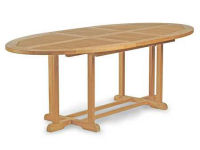Worms are one of those typical home pests that everyone has heard of but few people actually understand. In actuality, woodworms are a variety of pests, and while being little, they can wreak havoc on untreated indoor and outdoor furniture. In severe situations, they can potentially endanger the foundation of your house. If you know the appropriate procedures, treating woodworm won't be difficult and can save you a lot of money. Continue reading to learn everything you need to know about protecting and maintaining your house.
Woodworms are tiny, whitish beetle larvae that feed on wood. What a woodworm looks like is a harder question to answer, though. This is due to the fact that while woodworms spend the most of their life tunnelling beneath the surface of wood, harm caused by them is more likely to be seen than woodworms themselves.
Furniture woodworms can live for two to five years. In that time, a single grub can cause a great deal of harm to your house. A female will normally lay between 30 and 70 eggs, and an infestation like that will damage any wooden objects. The larvae eventually pupate and grow into full-grown adults, emerging from the wood. These only have a short lifespan, yet they quickly mate. The female will then look for a place to go.
Termites similarly consume wood, but their behaviour is substantially different from that of the pest. Take the appropriate termite prevention and treatment steps if you believe you have a termite infestation rather than a woodworm issue.
Common furniture beetles,
longhorn beetles,
powderpost beetles,
and
deathwatch beetles are some of the most prevalent species of woodworm beetles.
Since the larvae are rarely visible on the wood's surface, detecting a woodworm infestation can be extremely difficult. Exit holes, also referred to as pinholes, indicate that the woodworm has left and that the damage has already been done. Frequently, the technique outlined below can save the timber.
But first, there are a few clear indications of woodworm you should watch out for,
Be sure to keep an eye out for both live and dead beetles. Although not all beetles discovered close to wood are dangerous, it is a good idea to look into them. Early infestation detection can limit catastrophic damage.
Frass, which is essentially woodworm poop, can vary in texture and appearance but typically resembles coarse dust. It is a sure sign of a problem if it is discovered on or under furniture.The good news is that woodworms rarely damage dry, sound wood.
When outdoor furniture is left on a soggy grass, for instance, problems usually start when the wood absorbs moisture. After that, it begins to soften, making it the perfect spot for the female to lay her eggs.While woodworms can easily move from one damp piece of furniture to another, they rarely transfer from unhealthy wood to good wood. In order to prevent woodworm infestations, care and protection are essential.
Examine outdoor furniture once a month for chipped or cracked paint, paying close attention to any soft spots where it sits on the ground. If required, fix. Often, a strong, intact layer of varnish or paint serves as a defence against woodworm invasion.
On lawns or in areas where water collects underneath, avoid leaving wooden outdoor furniture unattended.
Before storing furniture for the winter, make sure it is completely dry. To avoid wetness, try to keep furniture in an area with sufficient airflow.To prevent further damage, you must respond swiftly if you discover holes or see frass. Even if it takes some time to complete these measures to get rid of furniture beetles, they are luckily simple to carry out and the essential supplies are easily accessible.
The following instructions are for treating both indoor and outdoor furniture. Call a licenced pest control professional right away if you think you have woodworm in roof beams or other structural timbers.




